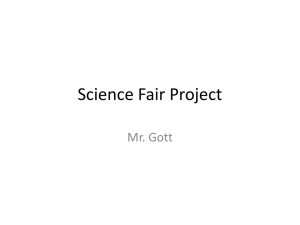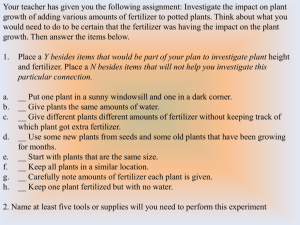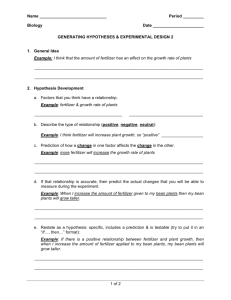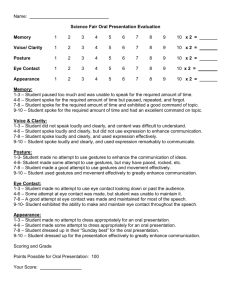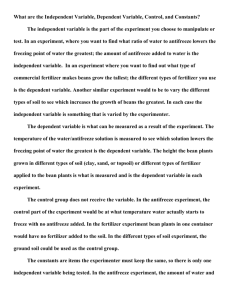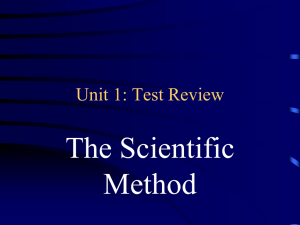Lab Reports
advertisement
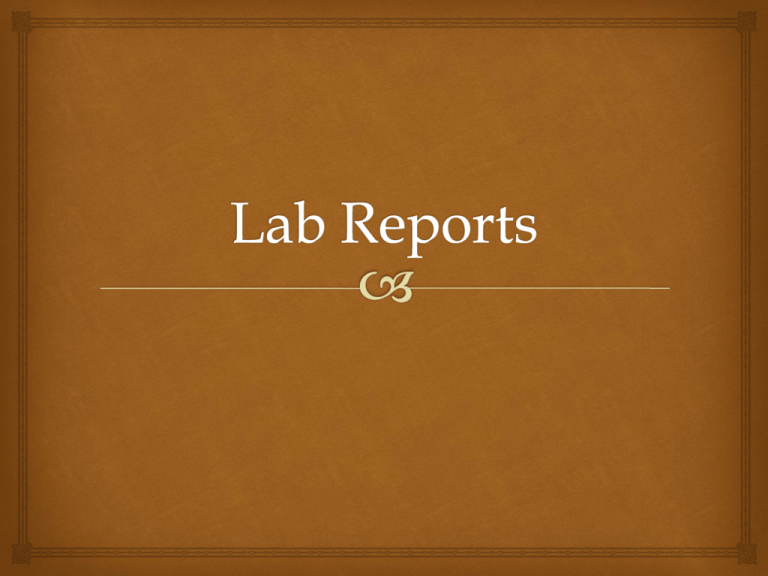
What is the Point? Lab reports allow other scientists to read about what you did Reporting your findings allows other scientists to review your work What’s in a Lab Report? Title Problem or question Lab set-up (This includes the materials you used, the procedure) Results (This includes data, graphs and your analysis of what happened) Conclusion Sources Title The title of a lab report should be at the top It should summarize the study Example: “How fertilizer affects plant growth” or “The effect of salt water on freshwater fish” Problem This is the main problem or question you want to answer This is usually just 1 or 2 sentences. Example: How does fertilizer affect the height a bean plant will grow? Be specific! Asking how fertilizer affects height of a bean plant is different from “How does fertilizer affect plants” Hypothesis This is your prediction of what might happen This is based on what you know, what you have read, and all your smarts. So don’t just guess! This is usually set up like an “If…. Then….” statement Example: If I put fertilizer on bean plants, they will grow taller than beans without fertilizer Experimental Design This includes the materials you used. List everything in detail. Don’t simply say “fertilizer” say “5 grams of fertilizer each day per plant” Procedures also go here. Write out what you did in step-by-step format. 1. 2. 3. Example: I planted 30 bean plants in a sunny corner of my backyard I have each bean plant 0.2 liters of water daily I gave 15 bean plants 5 grams of fertilizer every morning at 9 AM for 3 weeks. Results This is where your data goes. If you have qualitative data, you can show pictures or write descriptions If you have quantitative data, you can put the numbers in a table Fertilized Unfertilized Week 1 3 3 Week 2 4 3.4 Week 3 6 4 Results This section also includes graphs of your data The Effect of Fertilizer of Bean Height Centimeters Example: 8 6 4 2 0 Fertilized Unfertilized Week Week Week 1 2 3 Results Finally, this section includes analysis. Analysis is where you take a critical look at what you did. You point out any trends you see. You tell what you might have done wrong. Example: The beans that got fertilizer grew about 2 cm taller than those without fertilizer. I did, however, see that maybe they got more sunlight too. Conclusion This is where you wrap the whole thing up. What did you find out? Does this support your original hypothesis? What else do you want to know now? How could you improve your experiment for next time? Sources Because stealing from people without citing them is PLAGERISM and very bad, we must cite our sources! If you get anything from another place (website, book, etc) you have to give them credit. Example: George, Natalie. “How Fertilizer Works” 2012.
